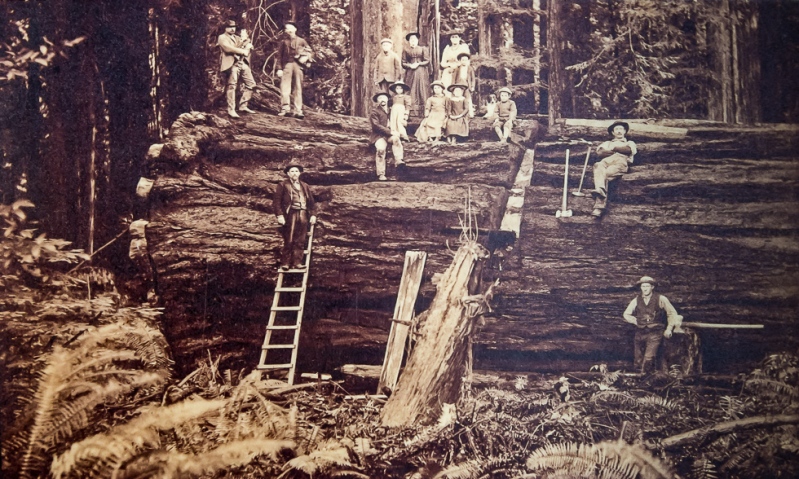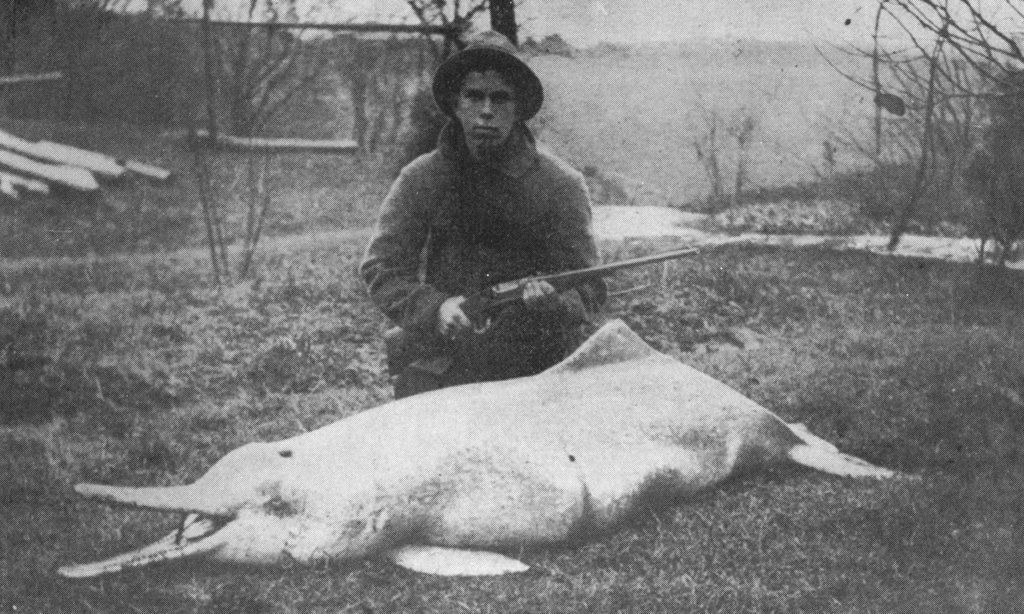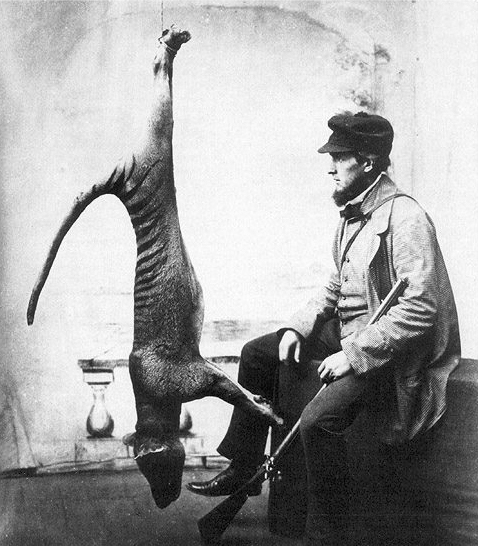We all too regularly forget that although things have certainly accelerated in the past few decades, humans have been damaging the planet and its biota for a good long while now.
And while scientists are always trying to recalibrate our shoddy, shifting baselines (see here for some interesting examples), sometimes an image can speak louder than words–or even science. Here are a few old black and white photographs that remind us that our influence on the biosphere stretches back well past living memory.
Redwoods


All told, since the start of civilization, the number of trees on the planet has fallen by nearly half and now ~15 billion trees are cut down each year (1). Patches of old-growth forests of sentinel redwood trees–the tallest trees on Earth–are now restricted to remnant patches of California. These photos show how these forests shrank with the advent of industrial logging.
Whales


In the 20th century, it’s predicted that nearly 3 millions whales (2) were harpooned from our oceans by industrial whaling. Surely this represents the biggest cull of any animal perpetrated in human history–at least in terms of biomass. Some species like the blue whale, the largest animal ever to have lived, were brought to the very edge of extinction. The photo above is of the sperm whale industry operating in South Africa.
Horseshoe crabs


After colonists noticed Native Americans enriching their soils with a strange creature, the horseshoe crab became a mainstay of the fertilizer industry. Off the coast of Delaware, mass spawning crabs were corralled into cages in their tens of thousands, and then left to rot on the beach, before being pulverised for crop fertilizer. For nearly a century, over a million crabs were harvested each year.
Bison

The photographs of men standing on piles of bison skulls are surely the most infamous images on this page and they belie one of the grimmest tales of our interaction with animals. Once roaming the Great Plains in their tens of millions, within a few short decades by 1890, there were fewer than 1000 bison left on Earth. They were shot for sport, industry, and as part of a coordinated campaign to extirpate the resource-base of indigenous populations. You can read crazy stories of train carriages purpose-fit with mounted machine guns that travellers could shoot bison from, for a jolly, as they journeyed across the American railroads.
Javan tiger


The last confirmed sighting of the now-extinct Javan tiger was of an animal glimpsed slinking through Meru Betiri National Park in 1976. The animal was persecuted by a combination of habitat loss, a collapsing prey-base and hunting, all exacerbated by burgeoning human population expansion on Java. The top photo shows a Javan tiger in a traditional ceremony called Rampokan. Big cats were released from wooden boxes and encircled by lance carrying warriors, who would try to prevent the animals from breaking out of the circle. If the cats broke the circle, it was seen as an omen of disaster as famine. A dead tiger in the bottom photo is shown alongside Javan leopards, still surviving on the island today, although one of the most critically endangered cats on our planet.
Giant mantas and Goliath groupers


You can find many old photos of how enormous fish in our waters used to be and how our nets and rods have downsized our ocean fauna, and changed the makeup of ocean communities. These, alongside images of present-day catch sizes, are visual representations of Shifting Baseline Syndrome, a term coined by marine biologist Daniel Pauly. The top image shows the largest giant ray ever caught; below is family fishing trip off the Florida coast in the 1950s.
RELATED ARTICLES:
- Three mind-shifting concepts for conservationists
- Yanking back our collective baselines
- Artwork of extinction: the most important painting in history…that you’ve probably never heard of
Emptying the Amazon


The fashion for wild animal skins and furs saw a hunting boom in the Amazon basin through the 20th century. Between 1904 and 1969, over 23 millions animals representing 20 species of mammals and reptiles were killed for hide exports in the western Brazilian Amazon (3). Aquatic species including giant river otters, black caiman and manatees experienced the steepest declines. The top image shows an Amazonian stand at the Brussels International world’s fair in 1910; the bottom are jaguar, otter and ocelot pelts in a Manaus tannery, 1950s.
American Chestnut

Between 3 and 4 billion American chestnut trees were destroyed in the first half of the 20th century by blight, a fungal disease that came from introduced chestnut trees from East Asia. Within a few short years, the species went from the dominant canopy species in the eastern forests to little more than a rare shrub. Some folks here are pictured posing with behemoth trees in the mid-19th century.
Baiji

The tragic extinction of the Yangtze river dolphin is told brilliantly in the book Witness to Extinction: How we Failed to Save the Yangtze River Dolphin. Persecuted every which way, the animal faced the combined stressors of millenia of hunting, river pollution and, more recently, boat collisions. The cetaceans weren’t spared either from the dismal outcomes of the Maoist regime, which saw megadams bisect their movement, and a starved human population empty their rivers. The photo above pictures Charles Hoy posing with a dolphin he shot in 1914.

Above, and back in the news recently for all the wrong reasons, an extinct thylacine is pictured alongside the hunter that caught it, back in 1869.

Another victim of the fur trade, commercial harvesting of Northern Fur seals started almost immediately after a 1742 expedition to the Commander Islands, Russia. Pictured above are hunters clubbing seals for their pelts. The species was so devastated by pre-20th century harvesting, that it now breeds almost exclusively on offshore islands at high latitudes (4).
Photos of sorrow and optimism
These photos are important for two reasons.
First, they yank us back in time and show us species and ecosystems that no longer exist. In our lifetimes, we will never get to walk through vast tracts of old, chestnut-dominated forests on the US Eastern flank. Nor will we get the chance to spot a Javan tiger, a thylacine or a Baiji river dolphin. That’s sad, and we should remember what we’ve lost.
But some of these photos are reminders of what can be achieved when a few dedicated people put their noggins together and try to make a positive change, against seemingly insurmountable odds. The bison, once nearly hunted to just a handful of animals, now numbers nearly half a million, with at least 15,000 of these individuals wild and free-roaming.
And spectacles such as in video below are visible once more, as an end to commercial harvesting has allowed different whale species to recover and recolonise former breed grounds.
Lessons from the past are a pathway to a better future.
RELATED ARTICLES:




